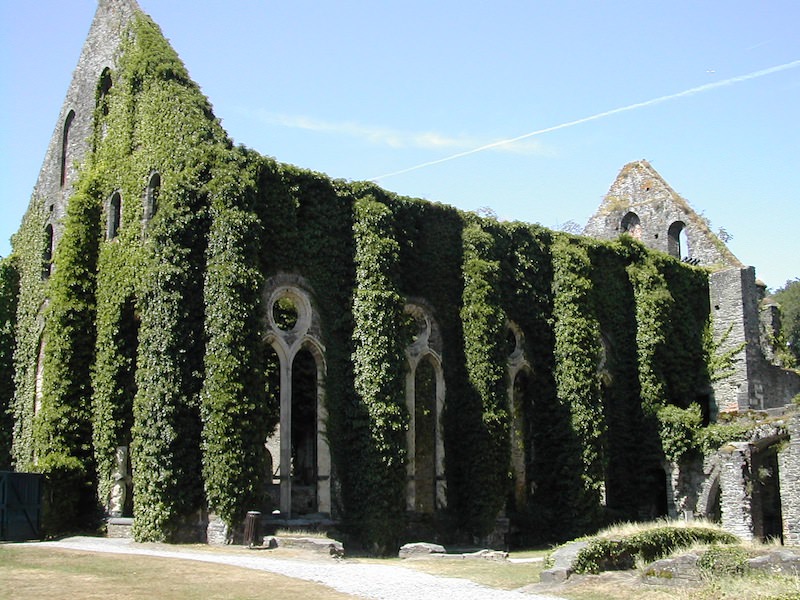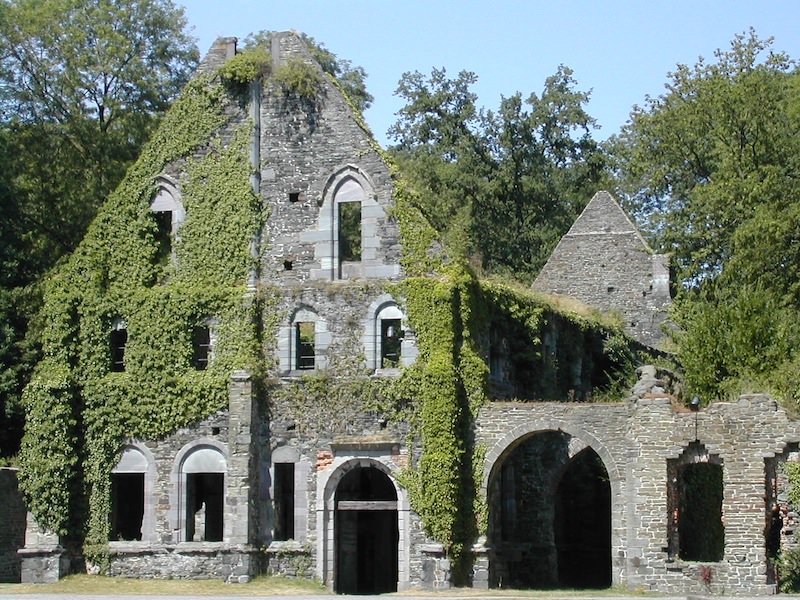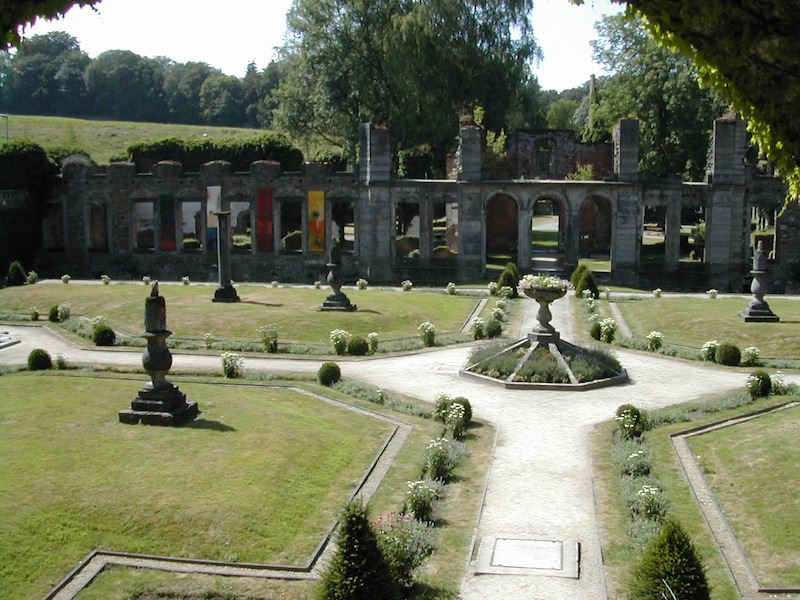With her atmospheric medieval squares and castles, and magnificent renaissance palaces, Belgium is Western Europe’s most underrated tourist destination. Foremost amongst Belgium’s extraordinary historic sites are forty-one ancient weathered gray stone and red brick abbeys.
Today, many of these monasteries lie sadly in ruins, derelict victims of revolution, war and other turbulent social events that dominated medieval history. It’s impossible not be entranced with the history of these deserted ruins as you walk between the towering green ivy covered Romanesque and Gothic chapel walls and through medieval arches leading to nowhere, with collapsed round columns lying strewn about you.
Many of the most beautiful and haunting monastery ruins are legacies of the ancient Cistercian order, an offshoot of the Benedictine religious order. Villers-la-Ville is without doubt Belgium’s most picturesque ruins, and its’ largest. This outstanding example of Cistercian architecture with imposing vaulted roofs, arches and rose windows is Belgium’s most visited ruins.
Founded in 1146 by Bernhard von Clairvaux, the Villers-la-Ville monastery was the major spiritual center of Belgium and Northern Europe. With up to 100 monks and 300 lay brothers residing within its gray stone walls, the monastery’s estate ranged out over 25,000 acres at its heyday in 1267.

The Monastery Refectory exudes a haunted look with high peaked walls completely covered in a thick tangle of climbing ivy.
Despite being ravaged and laid waste several times over the centuries by the Spanish (1544) and French (1796), it was continually restored by the faithful. However, by the 17th and 18th centuries the abbey’s power diminished as its wealth dwindled. Finally, in 1796, during the French Revolution, the monastery was destroyed, abandoned, then plundered and used as a quarry for nearby stone buildings.
Today, strolling through the ruins at Villers-la-Ville you get a poignant look at how the monks lived and worshipped as you walk through their refectory, kitchen, hostelry, workshops, chapter room, dormitory, hall, cloister, infirmary, church and chapel.
Entering through the gatehouse, the refectory looms up in front of you. With its walls completely covered in a thick green tangle of climbing ivy, it exudes a gothic, haunted look.
The stained glass in the tall arched windows, and smaller round and arched gothic windows must have looked spectacular as light shone through them.
A series of smaller stone rooms served as a kitchen, a pharmacy, and a cellar, giving you get an idea of the monk’s day-to-day activities. Now open to the sky, these stone walled rooms must have been smoky and hot in summer, and damp and drafty in the cold, rainy Belgian winters.
Emerging from the cellarer’s parlor, across a green-grassed field is another intriguing, cavernous ivy clad building, similar to the refectory. This was the hostelry, where one-hundred guests and pilgrims stayed. It stands roofless, with peaked facing walls covered in the ever-present ivy.
At right angles to the hostelry, a long line of low stone workshops spreads out. Here, the monks and lay brothers worked in silence, forging steel in the foundry, doing laundry, caring for the animals in the stable, and building cart wheels and furniture in the wheelwright’s and cabinet-maker’s shops–all part of their goal to lead self-supporting lives.
Nearby, the tall stone ruins of the church pierce the sky. Stretching out for 100 yards, with curved nave vaults towering 70 feet above you, the church is the most impressive part of the ruins. Started in 1197, the church was continually added to from 1210 to 1267; its blend of Romanesque and Gothic architecture clearly evident today.
Entering the church through a long entry nave, now wide open to the sky, tufts of grass grow atop protruding towers and buttresses beside you. The roof over the central chapel is still intact—amazing after the trials it’s withstood. Here, more than anywhere else, you get a glimpse of the monastery’s former grandeur as you look ahead at the transept.
Tall lancet windows cast blinding rectangular shafts of light into the cavernous church, while ivy tries to cover over the lower two rows of smaller round windows from the piercing light. The circular windows, known as oculi, are amongst the church’s most unique features—not seen in many Gothic churches of this era.
Next is the cloister, a rectangular central passageway through the middle of the monastery. Once covered with a vaulted stone covering, the cloister resounded with the monk’s meditative reading and chanting, as they shuffled around its cobble stone path in their long brown robes and sandals.
Written by Roy Stevenson for EuropeUpClose.com




Bali Villa Holidays
Wednesday 5th of December 2012
I really find old structures like these to be too creepy and has this phobia that they might be resident for some scary ghosts.